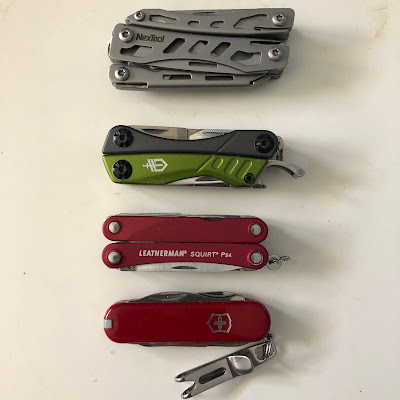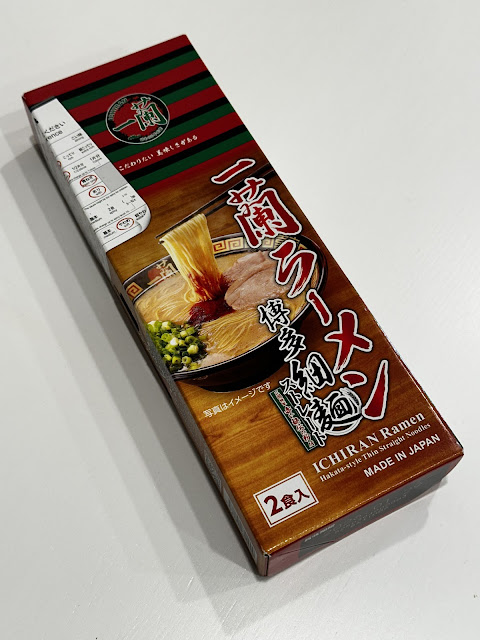My visit to Fushimi Inari Shrine in Kyoto was a fantastic experience that was like stepping into a world of legend and magic at times. Not quite Spirited Away, especially if you're visiting while it is crowded, they place is a beautiful sacred site regardless. Visit if you like Shinto Shrines in a natural setting, foxes, and atmospheric paths where you walk through hundreds of vermillion torii gates up a mystic mountain.
 |
| Main torii gate at the end of the avenue leading up to the primary shrine grounds at the base of the mountain. |
Fushimi Inari is the head shrine for the Inari shrines in
Japan, so it is Shrine #1 for about 30,000 thousand other shrines that range
from tiny to big. These shrines are dedicated to Inari, the Shinto god
of rice, and Foxes are Inari's messengers, which is why there are many
fox statues guarding the ways in and all over the grounds. This shrine
is ancient, dating back to 816 AD at this site, and is even older than that as it was moved here from another site in 711 AD. It predates Kyoto being the capital in the Heian Period.
A very famous shrine, it has appeared in Aria the Natural (anime episode 5), Inari Kon Kon anime (where it is set), and of course Memoirs of a Geisha. It appears innumerably in Japanese media and has millions of visitors at New Years. This shrine is often crowded with tourists by mid-morning to late afternoon, and a more calm and atmospheric visit can be had in the off hours. Still, the crowds are mainly in the bottom 25% of the mountain where the torii gates are densest, but you will lose the crowds as you head up the mountain where there is a small shrine at the top. Going all the way to the top and back down takes a couple of hours, but it will take longer as you'll be taking breaks and stopping to enjoy the sights, etc. On the way out or in, there is a very busy market street full of food vendors and shops just north of the main avenue up to the shrine. The smells of bbq and such from the vendors will tempt just about anyone to stop and eat something.
Getting to the shrine is easy as it is just outside the JR Nara Line Inari Station, a 5-minute ride from Kyoto Station. It is also a short walk from Keihan Electric Railway Main Line Fushimi-Inari station. In most of the photos for this post, I ran them through a woodcut / watercolour filter to make it more of an abstract representation. You can experience the true beauty of the place firsthand, with this just being a taster.
 |
| Main Gatehouse. Note the guardian foxes on the left and right. |
 |
| More guardian or messenger foxes in front of another gate. |
 |
| Closeup of a fox statue. The fox on the left usually has a key or cylinder which represents the key to the rice granary, while the other fox has a jewel that represents the spirits of the gods. |
 |
| A stage on the main grounds where performances are held. While we were there a young lady was performing. She must have been a pretty famous traditional singer as there was a photo shoot on the pathways afterwards with a big media presence with video being shot and many cameras. |
All Shinto Shrines in Japan are independently run and depend on the donations of worshippers. Fushimi Inari is a very prosperous shrine, but there is a lot of upkeep in a place this big, so donate some cash by making a wish or buying a ema tablet (these wish tablets are also cool souvenirs). Shinto priests are also often part business man to make the shrine prosper so they will promote the shrine through collaborations with anime, tourist boards, local businesses, festivals, etc.
 |
| Map of the shrine grounds. |
 |
| Some Torii gate shaped ema tablets. |
 |
| There are big gates near the bottom of the mountain. As you go up the mountain the gates become fewer and smaller, but there are lots of gates both big and small up to the halfway point up the mountain where there are tea houses. |
 |
| You can see how crowded the paths can get. These are some of the larger gates on the path. The path is pretty much completely paved and is even lit in the evening. I hear it is pretty quiet in the evening and very atmospheric with lots of shadows and such. Might even be a little spooky as you will feel like a spirit could appear. |
 |
| A long strait section on the lower paths. |
The best thing about visiting Fushimi Inari is the journey through the countless vermillion torii gates. This is a kind of magical experience where you think you could walk into another world, a mystical world, as the shrine is in a very natural setting with forest, birds, animals, and insects.
 |
| Lots of small gates here to give the illusion that the gates go on into infinity. |
 |
| A little further past the main shrine grounds is a smaller shrine area. Here there are fox faced ema wish plaques. You do your own fox face and make a wish. Inari foxes also love the little fried tofu pockets full of rice which is why they are called inari sushi! Be sure to try some on your visit. |
 |
| The way sunlight can play on the pathways is very cool. You are also surrounded by a forest and a lush green canopy all around you and even above the gates. |
 |
| A stretch of path with no people! |
 |
| Some ladies dressed up for the walk up and they're even wearing the traditional wood clogs. This is not a difficult trail, but you must like steps. If the trail is wet, the stones can be slippery. |
 |
| Just below the halfway point is a small lake and just before that is an area full of little shrines dedicated by various people and companies to Inari. There must be dozens of these little shrines here and it is a very reverent kind of place. The guardians here seem to be some semi-feral cats that the shrine staff or the business owners take some care of. |
 |
| Detail of a small shrine. |
 |
| On our way up, we also hit a traffic jam. There were workers carrying up the big pine logs to repair a torii gate. This is backbreaking work to carry up. With thousands of these wood posts, repair must happen almost daily to replace rotted wood. |
 |
| People watching the posts being raising into position. |
 |
| Stone steps underneath torii. |
 |
| More giant torii. There is writing on the back side of the gates which indicates who sponsored the gate. The front side of the gates has no writing. |
 |
| A parting shot of the beautiful and mystical looking gates. |
 |
| The well kept shrine grounds at the main area at the bottom of the mountain on the way out. Even in the late afternoon you can see people heading up. |
I had a fantastic time visiting Fushimi Inari. I would definitely visit it again and even try to visit first thing in the morning or late in the afternoon to avoid the crowds. Kyoto has like 20 million tourists a year visiting, so crowds are to be expected. This place is also amazingly photogenic, but you might have to wait a bit for the perfect shot, so relax, zen out, and let the shrine put you in a nicer frame of mind.
Visit my travelogue posts page.
Visit Kamakura, near Tokyo, which is like a mini-Kyoto on the coast.
More Kyoto Posts
- Whirlwind Tour Through Tokyo and Kyoto
- Kyoto Trip Highlights - Amazing Sights
- Pokemon Go As You Travel In Tokyo And Kyoto
- Eating Well While Travelling In Japan - Part 1 (without breaking the bank)
- Eating Well While Travelling In Japan - Part 2 - Kyoto Dining (Ekiben, Bullet Trains, Fushimi Inari Food Stalls)
- Eating Well While Travelling In Japan - Part 3 - Kyoto Dining (Nishiki Market Grazing)
- Eating Well While Travelling In Japan - Part 4 - Kyoto Dining (Kyoto Style Sushi, Arashimaya, and Kinkakuji
- Eating Well While Travelling In Japan - Part 5 - Kyoto Dining (Gion, Ootoya, Kiyomizudera, Kyoto Station Ramen)
- Eating Well While Travelling In Japan - Part 6 - Tokyo Finale (kaiten sushi, takoyaki, and curry)
Follow me on Twitter a
@Tostzilla or my
feedburner for this blog.


































Comments
Post a Comment